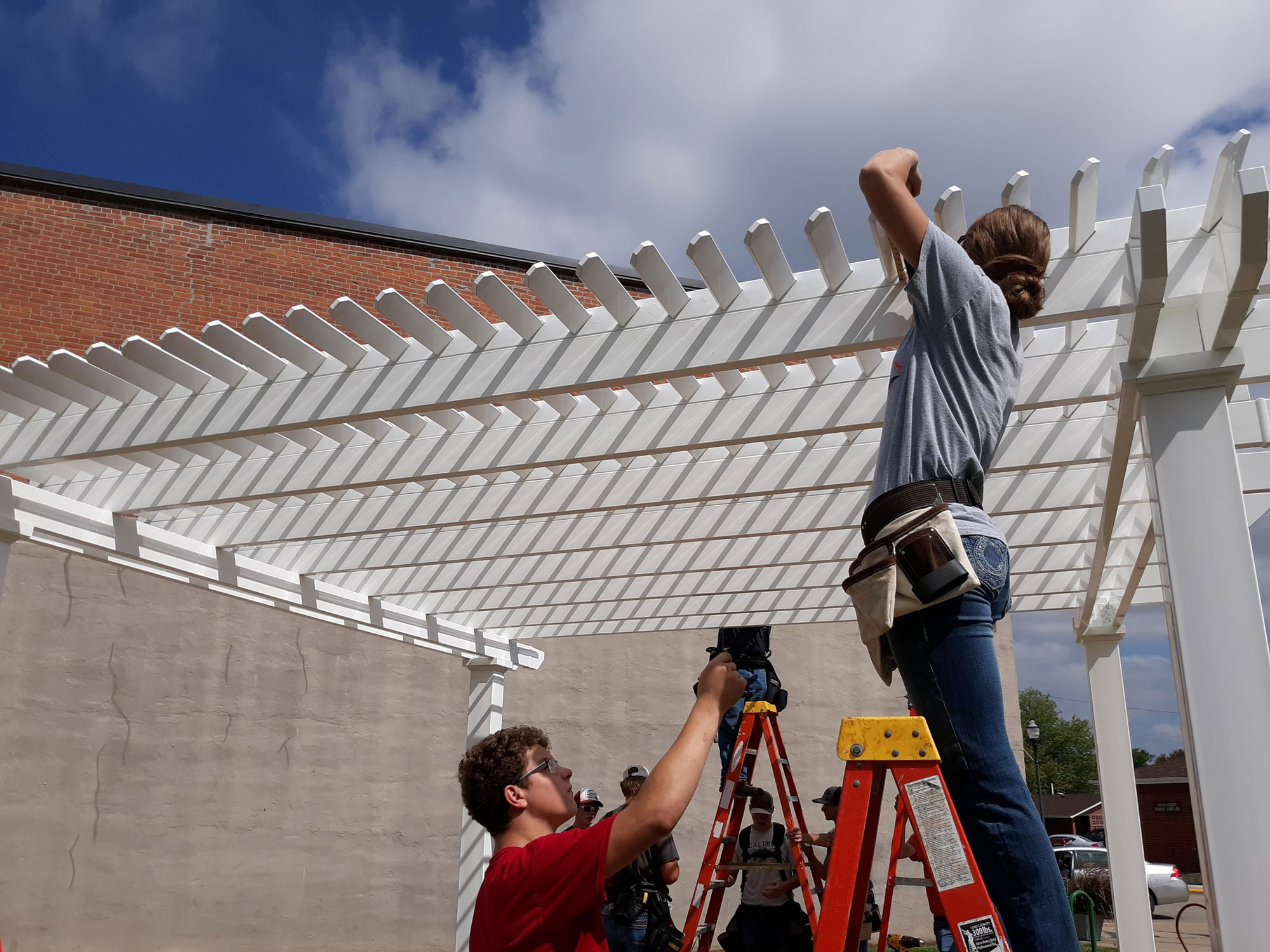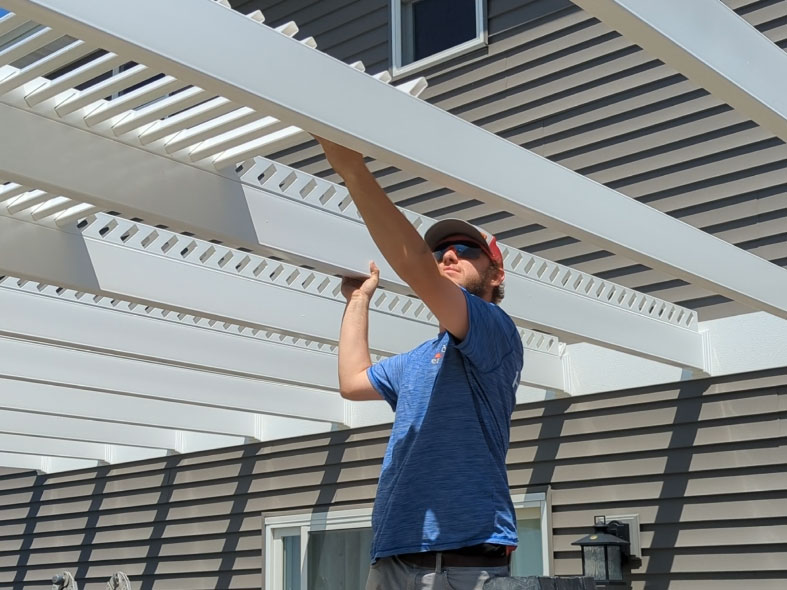When considering an outdoor structure like a pergola, are you up to the task of installing the structure yourself, or are you looking for the skills of a professional? There are many factors to consider before deciding to tackle an outdoor structure project on your own.
Some pergola installations are easier than others. Some pergolas come as a kit with all parts and pieces accounted for and ready to assemble. Others require raw materials and a custom build. The latter will be a bigger challenge for a DIYer as they will need to acquire both structurally sound plans, as well as all the raw materials to not only design the structure, but then build it as well.
Heartland Pergola kits are made with DIYers in mind. We have detailed instructions available in multiple ways. A written manual is included in your kit and is also available online as a pdf download.
We also offer video installation guides that show you each step visually as well as the tools used. This gives you more context to the written instructions and whether you learn best by reading or learn by watching, we have you covered. Both options are online and available 24/7!
And if you still have questions, one of our best resources for DIYers is the ability to call and talk to a real human who can help you with the process! Our customer support team is here to help you, beginning with the planning stages and all the way through your installation steps. You are not alone in the process!

For a Heartland Pergola, the process is pretty smooth. But keep a few things in mind before tackling the process on your own.
First consideration would be if you are comfortable with the steps in the unloading process? If you havenít watched our How it Ships video, itís crucial to understand how your pergola will arrive at your home. A pergola is a large structure that doesnít get folded neatly in a little box. All pergolas (except for our eyebrow pergolas) will come on a large pallet and are shipped LTL Ė which is a box or semi-truck. Part of the process involves unloading the pieces from the truck when it arrives at your home. This sounds more daunting than it really is, no single piece is over 50lbs and two able bodied adults should have no trouble getting the pieces unloaded in 10-15 minutes.
Second consideration would be your comfort around using some basic tools. If you have experience using drills and saws to some extent, you should be able to cut, trim and fasten all the pieces of the pergola system without issue.
The tools required are as follows:
The tools needed if creating a concrete footing:
Third consideration is having a helping hand. One person could potentially do the job themselves (the use of several quick clamps would be useful to have on hand if thatís the case) but having a helping hand or two will make a big difference and speed up the process!
Fourth consideration is your comfort level working on ladders. Much of the work of a pergola needs to be done overhead and working 8í-14í in the air (perhaps much higher if working on a raised deck) and this can be daunting to some. The steps are relatively easy but doing them up on a ladder does increase the complexity.
How much time should I expect for installing a pergola on my own? Your skill level and the number of helpers you have (or donít have) will play into this, but itís typical for the average homeowner to spend 1-2 days installing their pergola.
The first reason is the easiest, because you donít want to do it!
You work hard day after day and the thought of another project added to your to-do list over the weekend is just a no-go for you! Whether you are a parent in the depths of running kids to every event across town, a busy professional or a retiree with a hefty schedule of R&R Ė hiring someone to complete the project for you is completely understandable!
You know your limitations as a DIYer.
You may excel in many areas of your life but know that hands-on construction projects arenít one of them. Itís okay, and SMART to recognize that construction skills just arenít your forte before spending a bunch of money on tools, materials and time!
Limited time.
Though pergolas are an easier structure to build, if you have never done one before, itís still a new skill to you, which means a greater potential for longer timelines and costly mistakes that will delay your project getting completed. If you know you are up against a hard deadline, you may want to seek a professional to get the job done. However, this still requires leaving a lot of time to plan for the installation. In many parts of the country, contractor schedules fill up quickly in the spring making the turnaround times to get jobs complete longer the later in the year you try to hire someone. However, a quality contractor will be able to install a pergola in half the time it will take a first time DIYer. With access to more/better tools, materials and know-how, they can complete your project quickly and with high quality results.
Your project requires lots of customizations.
Not all pergola projects are created equal. Highly custom pergolas may require a deeper knowledge of materials, design and craftsmanship than an intermediate DIYer can handle. Installing a simple rectangle or square pergola is one thing, but triangular pergolas, pergolas with irregular shapes, curved ends, unique structural attachment, or pergolas that require running electricity or unfamiliar surface mounting all may require a professional that is seasoned to deal with the complexities your project calls for!
It's part of a larger project.
Pergolas can also be tied into larger outdoor projects like an outdoor kitchen or pool installation which requires a lot of planning and expert installation to make it all come together seamlessly.

You are never in it alone!
Whether you choose to DIY your pergola install or hire a professional, you are never in it alone! Our team is here to help you or your hired contractor with any questions and with all stages of your pergola build. From design stages, customizations, ordering, installation and any follow up after!
If you can’t find what you’re looking for please give us a quick call at 563-345-6745 or use our chat box in the bottom left corner of your screen!